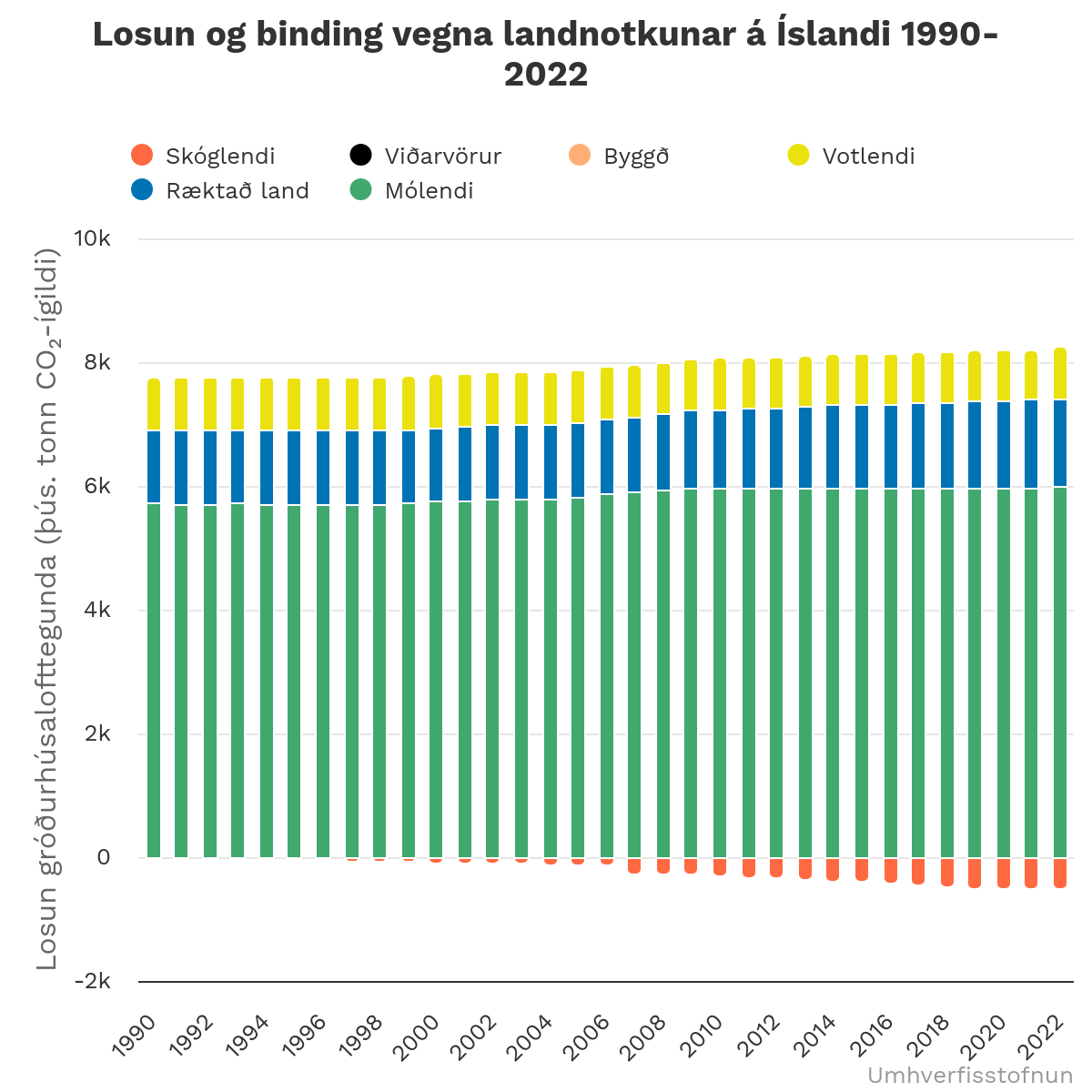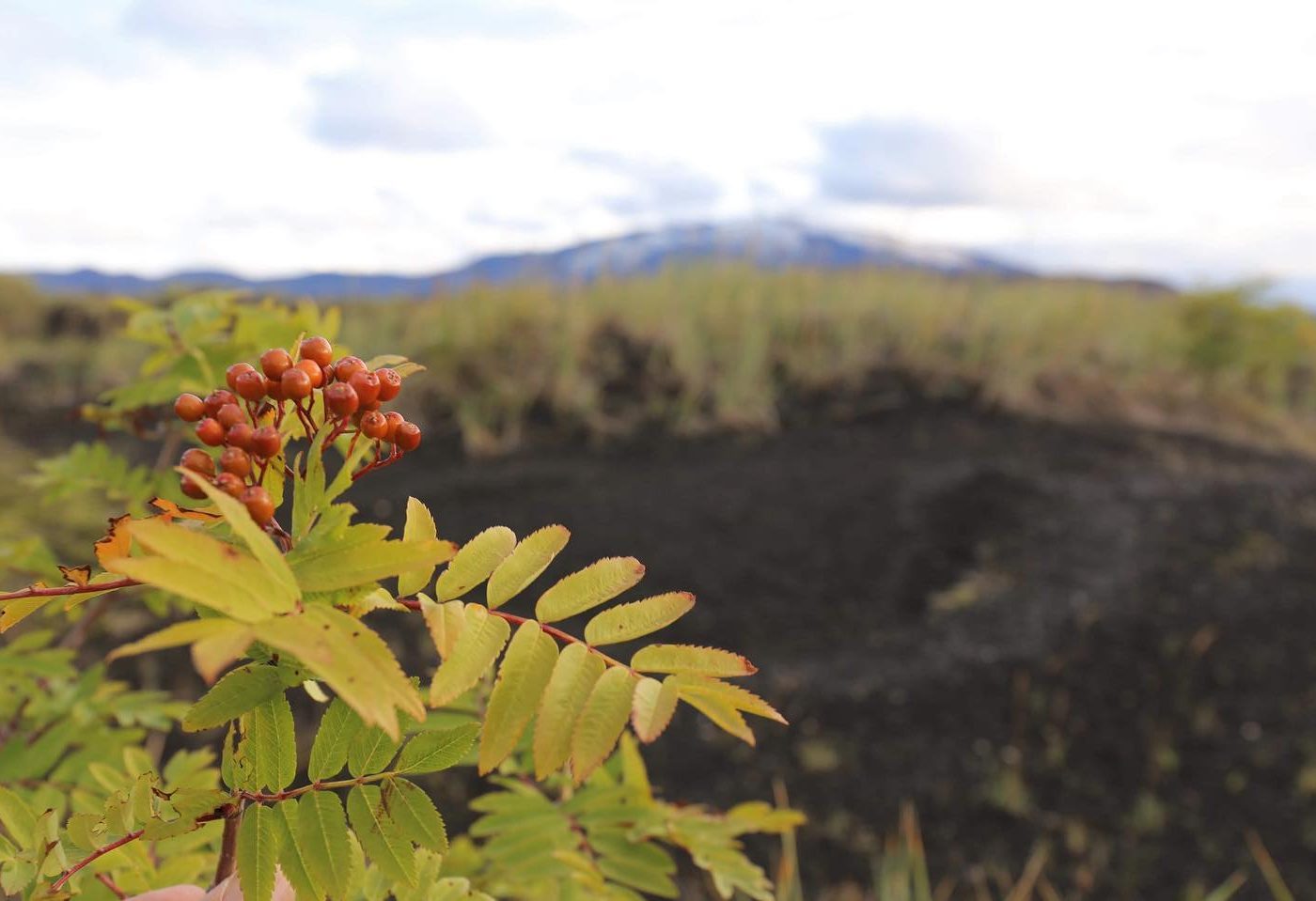Land use emissions rise, but binding in forests rises
6th June 2024
At the Climate Day of the Environment Agency of Iceland, which took place recently, the development of emissions and binding in Iceland was reviewed. It was revealed that in 2022 Iceland’s total emissions increased by almost one percent from the previous year. Emissions due to land use increased by the same number, but it was also revealed that the binding of forest land has increased seventeenfold since 1990. Figures on emissions and sequestration in the land use category are based, among other things, on the extensive work of Land and Forest Iceland's experts.


During the Icelandic Climate Day held in Harpa on May 28th, Chanee Jónsdóttir Thianthong, an Environment Agency of Iceland specialist, delivered a presentation analysing Iceland's emissions accounts, specifically the estimated human-induced greenhouse gas emissions within Iceland's borders. She outlined the categorisation of Iceland's emissions into three groups based on the country's climate commitments: Land use, land-use change, and forestry (LULUCF), EU Emissions Trading System (EU ETS), and the Effort Sharing Regulation (ESR).
The highest per capita emissions in the Nordic Region
The total emissions in 2022 amounted to 12.4 million tonnes, with land use emissions accounting for 7.8 million tonnes, representing 62% of Iceland's overall emissions. The primary contributor to land use emissions is the drainage of wetlands. Notably, Iceland has the highest net emissions per capita, reaching 33 tonnes, while the other Nordic countries have net emissions below ten tonnes per person, with Sweden having the lowest.
The high per capita emissions in Iceland are primarily attributable to the land use category, particularly the substantial emissions from drained land. In contrast to most European countries, where the land use category has a higher binding than emissions, Iceland's emissions significantly exceed the binding in this category. If the land use category were excluded, Iceland's per capita emissions would be approximately twelve million tonnes.
Chanee went into detail about the three categories of emissions accounting and there were some interesting points. We will suffice to mention only the land use category, but below is a link to her message and also on the website of the Environment Agency of Iceland on Iceland’s emissions and liability status in 2022. It points to a new report on Iceland’s greenhouse gas emissions that has been published on the website of the Environment Agency of Iceland. It contains the main information on Iceland’s greenhouse gas emissions and discussions about Iceland’s climate commitments.
In her thorough exposition of the three classifications of emissions accounting, Chanee presented several significant observations. While our focus here will be on the land use category, we highly recommend that readers check out her presentation and and also a news report on the Environment Agency of Iceland's website for further information on Iceland's emissions and liability status in 2022. Furthermore, the Environment Agency of Iceland has released a new report on Iceland's greenhouse gas emissions, offering extensive data and analysis. This report serves as a valuable resource for comprehending Iceland's emissions profile and advancement toward its climate commitments.


Land use emissions
In 2022, Iceland's land use emissions increased by 1% year-over-year, reaching 7.8 million tonnes. Peatlands are the primary source of these emissions, accounting for 77% of the total. Agricultural land and wetlands contribute 19% and 11%, respectively. Notably, drained wetlands significantly impact land use emissions and are categorised under peatlands or agricultural land based on their current state.
Land use sequestration
In the year 2022, the sequestration of carbon dioxide equivalents in forest land in Iceland reached 505 thousand tonnes, representing a substantial seventeenfold increase since 1990. Notably, forest land stands as the sole land use category exhibiting net sequestration in Iceland. Conversely, all other categories, including wetlands, agricultural land, and moorland, are characterised by higher emissions than sequestration. Through the restoration of wetlands, there exists an opportunity to mitigate emissions within the land use category. While it is true that methane emissions may increase during such restoration efforts, Chanee points out that these are by far outweighed by the cuts in emissions achieved by wetland restoration efforts.
During her presentation, Chanee underscored the complexities Iceland faces in fulfilling its global commitments and attaining its 2030 objectives. She identified several avenues for advancement, encompassing:
Land utilization: Wetland restoration, land reclamation, and forestry initiatives.
ETS (Emissions Trading System): Enhancements in production methodologies, utilisation of biomass, and fostering innovation.
Community emissions reduction: Encouraging sustainable consumption and transportation practices, alongside energy transition mechanisms.
All the talks and discussions from the Environment Agency’s Climate Day can be watched on the Environment Agency’s Youtube channel.

